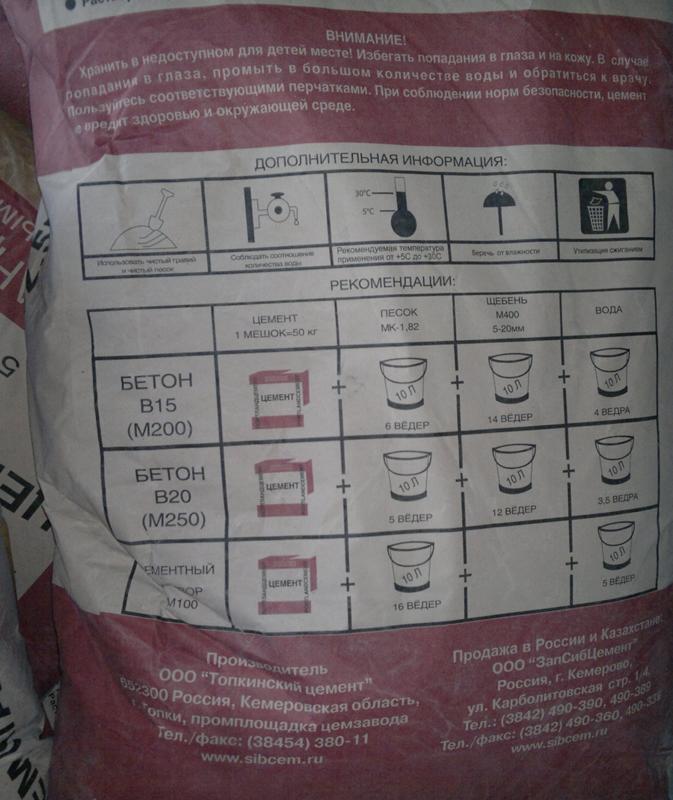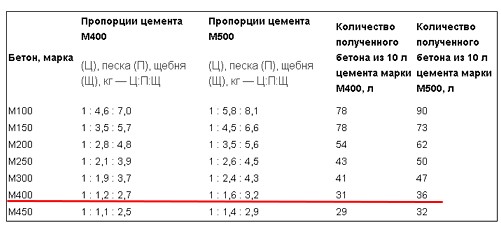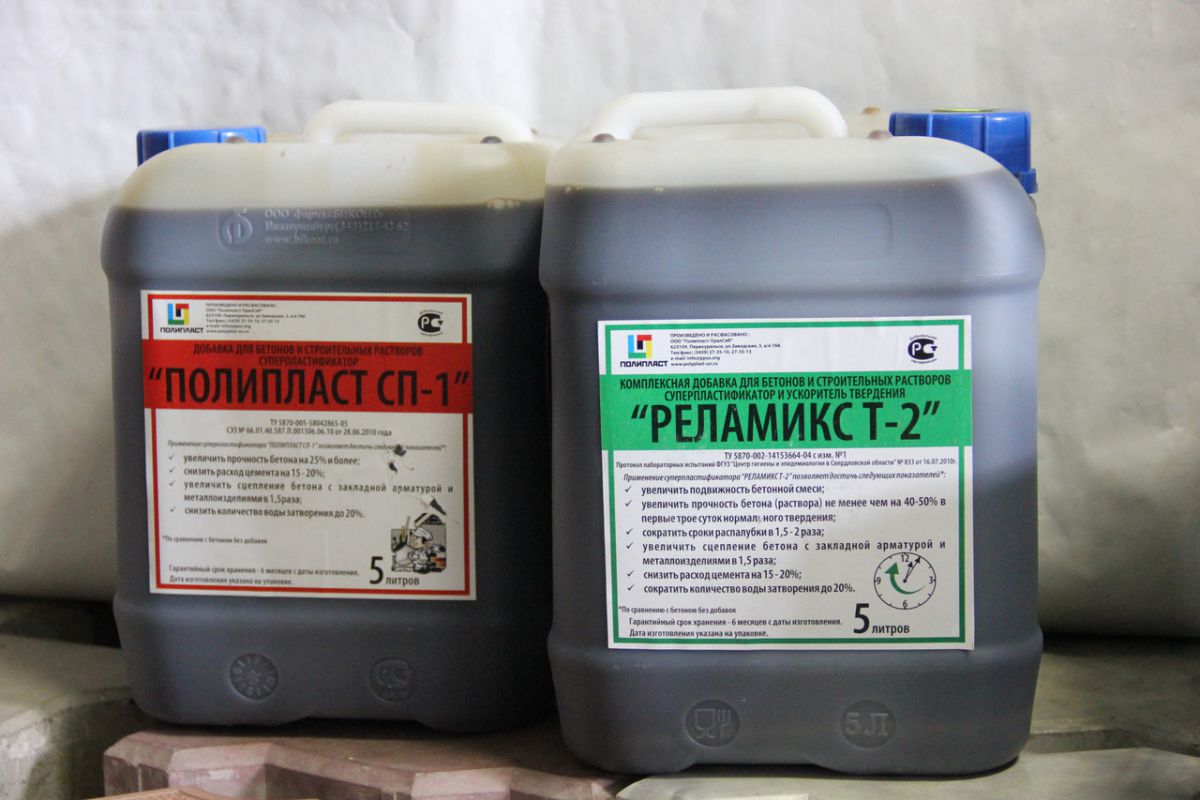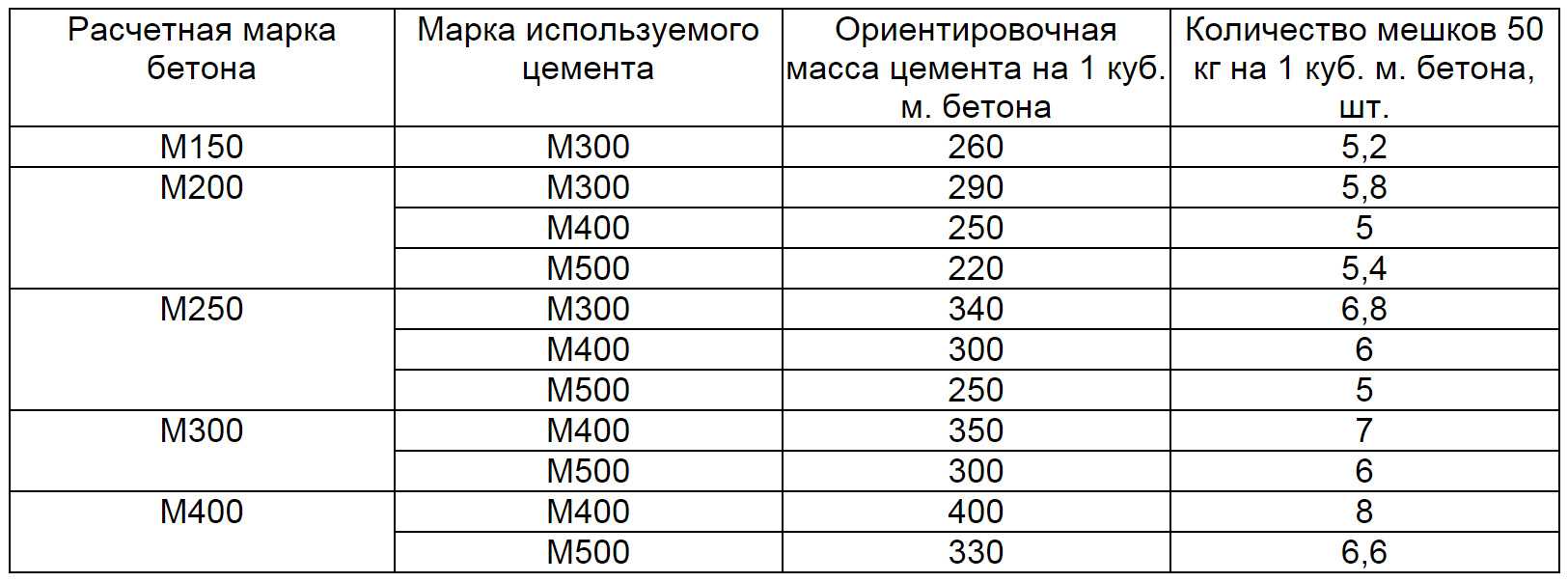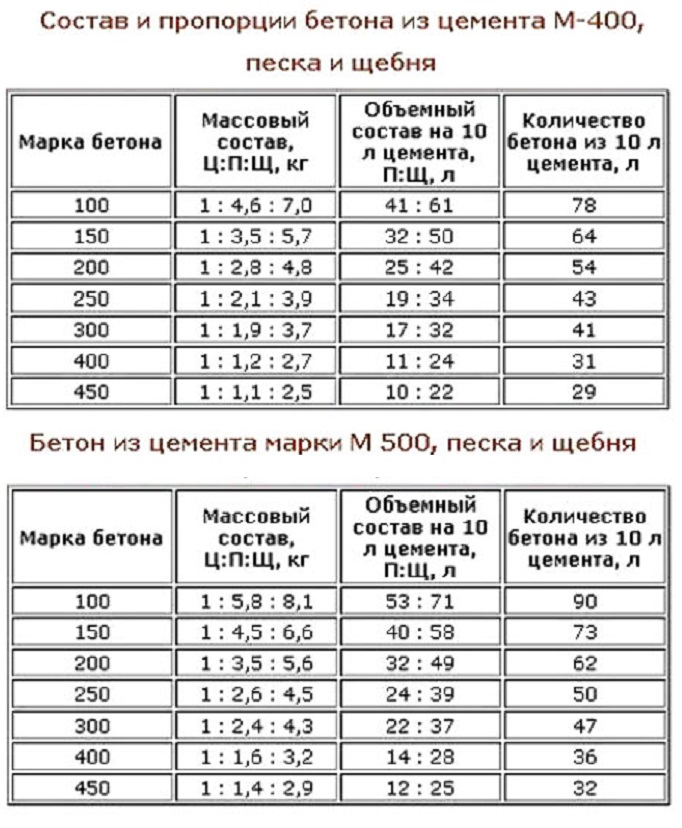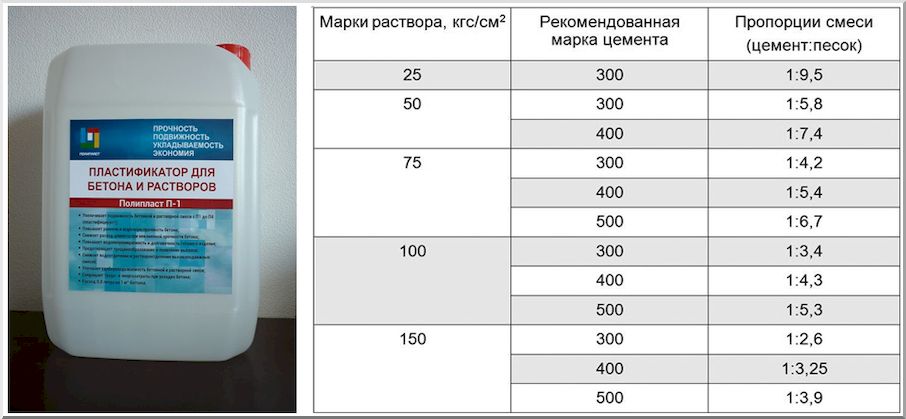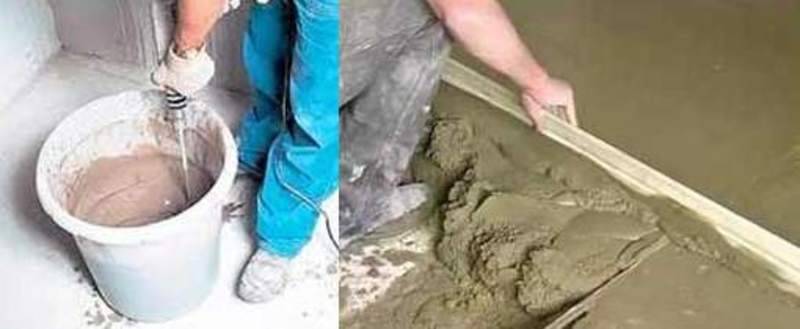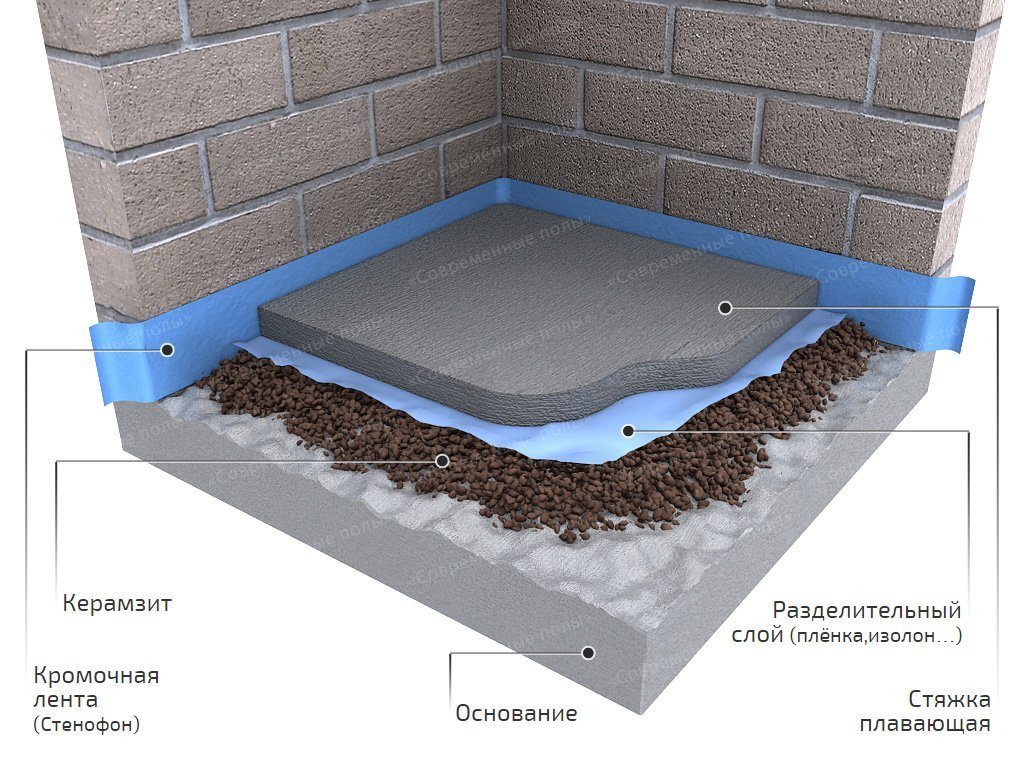How to make a plasticizer yourself
The main purpose of the plasticizer is to improve the strength parameters of the concrete mix. The preparation and use of this special additive increases the plasticity and elasticity of the mortar used for the installation of underfloor heating.
A self-prepared mixture must meet certain qualities in terms of:
- toxicity;
- chemical resistance;
- "Volatility";
- decomposition temperature
Making a plasticizer on your own significantly reduces the cost of underfloor heating.
Homemade additives can be based on:
- diluted washing powder;
- shampoo;
- liquid or regular soap.
The amount of homemade additives added is different and depends on the type of base material used. For example, when mixing a bag of cement with expanded clay filler, 0.2 liters of liquid soap is used. This additive will prolong the solidification time of the solution, which will make it better in this case.
Soap should be added at the beginning of the preparation of the solution. The only drawback of using such a homemade plasticizer is the appearance of foam, which complicates the work.
With the advent of plasticizing additives, the work on the screed device has become better and less laborious. The need to manually remove air bubbles has disappeared, and it has become possible to prolong the uniform hardening of concrete.
Preparation of the plasticizer
The purchased plasticizer is added to the original sand-cement mixture in compliance with all manufacturer's recommendations
Particular attention should be paid to the proportions of the plasticizer taken and the prepared screed solution. The operational properties of the finished warm floor depend on this.
Most often, on the Russian construction market, the buyer is offered a liquid, viscous consistency plasticizer C-3. The composition is diluted with water and the screed is mixed with a plasticizer in a deep container. For every 100 kg of cement, add about 0.5 to 0.8 g of the prepared plasticizer composition.
We recommend: How is the installation of a warm floor Lavita carried out?
There are recipes for self-preparation of a modifier for a cement-sand mixture using the following components:
- liquid soap solution, it is necessary to dilute with water at the rate of 250 cm3 per 50 kg of cement mixture;
- 150 g of washing powder dissolved in water is added to 50 kg of screed solution;
- construction grade PVA glue is used to prepare a modifying additive. For 50 kg of sand-cement mixture, 299 g of glue is used.
Supplement options
All types of substances differ primarily in price and characteristics. Therefore, before purchasing the material, it is necessary to study all the nuances in order to understand which plasticizer for a warm floor is better from the available ones:
- One of the demanded funds is considered to be the SP-1 S-3, which is similar in characteristics to the German-made Mighty 100. The material is produced in the form of a powder, its volume is added with a volume of 0.8% of the total mass of concrete. The fluidity of the components increases by 8 times, the water demand of the cement structure is reduced by 18%, and the strength is increased by 35%. The increased resistance to defects was noted by 4 times.
- For the manufacture of electric or water floors, plasticizer HLV-75 is used. It is intended for both a rough base and a fine screed. For 100 kg of cement, there is an average of 1.25 liters of the product. The water absorption of the coating is reduced by 35%, the strength of the floor is increased by 25%, and the hardening is 4 times faster.
- For a wide range of actions, Batichem is used.The additive is used for a variety of concrete structures, including underfloor heating. The cement mixture acquires a viscosity of 40%, and the water absorption decreases by 20%. The setting time is reduced, and the shrinkage of the concrete is accelerated. In addition, the plasticizer helps to stabilize the hydration of the concrete solution.
- High quality Rehau is considered to be of the highest quality. It is widely used for all kinds of concrete products. In addition, the material is environmentally friendly, significantly increases the elasticity of the solution. Experts note that the addition of this tool significantly improves the thermal conductivity of the subfloor under the warm floor.
In this video, you will learn about the composition of the ideal floor screed:
How to make a plasticizer for concrete with your own hands
Ready-made plasticizers are widely available for sale in almost any hardware store, but the cost of purchasing them, especially for large construction volumes, is quite significant. But preparing suitable formulations is quite easy on your own, while saving money. You can successfully replace a factory-made plasticizer with a variety of tools available in every household.
Here are some easy-to-prepare recipes for obtaining products that improve the performance of masonry mixtures and ready-made constructs:
- Shampoo, dishwashing detergents, ordinary washing powders or liquid soap are added to water, mixed thoroughly, the resulting container is poured into a special container for preparing concrete. Further, cement and other components are gradually poured into the container.
With the help of such an additive, the working mixture will become more plastic, and the beginning of its setting will be delayed by three hours. But when using soap compositions, even with strict adherence to the consumption of the plasticizer and the sequence of preparation, the following disadvantages are inherent in masonry mortars:
- “efflorescence” (salt stains) may appear on the surface of finished constructs, due to the phosphate additives included in the detergents;
- a protective film does not form on top of the hardened concrete;
- soap components impede the formation of air bubbles, which leads to wetting of the structure and the appearance of mold;
- mixing the soap mixture leads to the formation of a large amount of foam, which degrades the quality of concretes and mortars, which leads to the need to wait for it to settle.
- At home, it is effective to add slaked lime to solutions. Adding it up to 20% of the cement mass makes the working mixture elastic, increases its stickiness and provides bactericidal protection. The finished structures become stronger and more resistant to the formation of mold.
- The addition of PVA glue diluted in water (200 g per bucket of cement) increases the moisture resistance of the solutions, their strength, mobility, adhesion to substrates and resistance to fracture loads. Depending on the conditions of use for 1 m3 of concrete, the consumption of PVA glue will be from 5 to 20 liters.
Before the invention of plasticizers, proteins of chicken eggs were added to masonry mortars, which significantly improved the strength and quality of masonry mortars. An example of the high skill of ancient builders are engineering structures that have survived to this day (Roman viaducts, Egyptian pyramids and temples in various parts of the world).
How much factory-made plasticizer to add to solutions and clear rules for their use are indicated in the necessarily attached instructions. This ensures that the required properties of the working solutions are achieved.
It is impossible to purchase a ready-made or make your own ideal plasticizer.
When choosing suitable additives, in addition to its direct purpose, it is necessary to take into account many different factors: the type of the construct being erected, the composition of the working mixture, the presence or absence of reinforcement, the time for transportation and installation, seasonality, weather conditions, etc.
Most in demand:
- superplasticizer S-3, which has a double effect: improving the strength characteristics and reducing the consumption of cement binder;
- liquid additive Sanpol, which improves the mechanical strength and thermal performance of screeds;
- Rehau, this premium product improves the quality of thin concrete layers;
- "Polyplast SP-1", used in the manufacture of structures from heavy, light and cellular concrete, including high-quality heavy mixtures ≥ B45;
- TsNIPS 1, BS and Phlegmator-1.
The following manufacturers of plasticizers are most popular:
- domestic companies "Neoplast" and "Component";
- German SE Tylose GmbH;
- trade brands TM “Den Braven” and Sika.
Instruments
For self-production of a screed, it is best to rent a concrete mixer: with a large amount of work, the unit will provide good assistance. If the screed is made in a small room (for example, in a bathroom), then mixing the solution can be done manually.
You will need the following tools:
- trough;
- shovel shovel;
- a tool for mixing the solution (hoe, cat-hoe);
- a bucket for transferring finished products and measuring components;
- building level;
- as a rule - a wooden board (1-1.2 m) with a handle for stretching the piled mortar.
The materials to be prepared are cement, sand and gravel. The concrete is closed with plain cold water, but if you wish, you can add plasticizers (PVA, etc.) to it. For the manufacture of a flat surface, you will need special beacon profiles or flat wooden planks.

Varieties of plasticizers
The list of increased screed characteristics when using a plasticizer
All types of plasticizing additives are designed to increase the density of the concrete solution. But the additional properties of highly active compounds also depend on the concentration and presence of certain substances. What types of plasticizers can be purchased?
- Liquid. This type of product is better than dry only because it does not require additional dilution with water. In the process of preparing the working solution, it is simply added to the total mass in the required amount;
- Dry. When preparing a concrete mixture, the dry plasticizing component is used most often due to its long storage period. Before mixing with the cement mortar, the dry powder is simply mixed with a small amount of water;
- Reinforcing. Contains polyamide substances that strengthen the screeds and prevent them from cracking;
- Anti-freeze. The dry or liquid composition is enriched with special frost-resistant components that prevent the plasticizer from crystallizing even at sub-zero temperatures.
Which plasticizer is the best to buy? Each of them has a set of separate technical characteristics that are relevant to a specific application. The dry composition increases the homogeneity of the solution and can be stored for a long time in powder form, the liquid composition easily and without any problems interferes with the cement mixture, the reinforcing composition increases the service life of the subfloor, which is important when arranging foundations in commercial premises.
Self-production
Taking into account the cost of the described additives, many are trying to reduce costs and replace them with cheaper analogues. In this case, we are talking about making a plasticizer with your own hands. It is worth noting that, subject to the proportions and instructions for preparing the additive, concrete will receive all the necessary properties.Homemade mixtures are made using liquid soap, hair shampoo, or washing powder dissolved in water.
By the way, before the appearance of the first plasticizers and chemicals, the performance of mortars and concrete was increased by adding egg whites. This made it possible to maximize the strength of the mixtures.


So, when combining one bag of cement with expanded clay, you will need to add about 200 ml of soap solution. As a result, it will be possible to provide resistance to solidification within 3 hours.
It is important to remember that liquid soap must be added at the initial stage of concrete work. Otherwise, expanded clay will mix unevenly, due to which concrete will lose its key properties.
With all the advantages, soap solutions have one important drawback. In this case, we are talking about the almost inevitable formation of foam when all the components are combined. This is especially true if a concrete mixer is used. However, the problem is not critical, since work can be started immediately after the foam settles.
Another way to prepare a sufficiently effective plasticizer is to use hydrated lime. This mixture makes any solution as sticky and elastic as possible.


Features of the solution
The use of a mixture for a warm floor when pouring a concrete screed is somewhat different from those rooms where there is no heating. The operating mode of such a floor is somewhat complicated, and, therefore, the requirements for the solution increase. A temperature of 50 degrees is maintained inside the cement screed under the warm floor. It becomes slightly lower closer to the base - within 30-35 degrees. The following installation errors may appear if you do not follow the installation technology and poorly prepare a solution for screed floor heating:
On the basis, minor microcracks will begin to appear, which over time will only increase in parameters. This can subsequently lead to destruction or damage to the floor covering.
Due to the appearance of a large number of cracks, the cement layer in the screed will begin to warp. The heating elements will also be damaged and the entire system will lose full efficiency.
Temperature conditions will decrease not only inside the entire structure, but also near the base of the floor in the room. The cracks that appear have excellent thermal conductivity, and heat will escape through them.
To prevent all this from happening during the operation of a water heated floor, a prepared screed for pouring onto a pipeline must have a certain set of technical characteristics:
- Low setting time for cement. The likelihood of residual stress will increase depending on how long it takes for the solution to completely dry. In addition, the setting process may differ: in one area, moisture is still preserved, in the other, everything is dry.
- Insignificant porosity. The efficiency of the water underfloor heating system will be higher if the density of the entire structure reaches its maximum. At the same time, the thermal conductivity of the structure also increases.
- High strength. Cement-sand screed of warm floors must be able to withstand external loads and mechanical stress.
- Low probability of cracking on the base. If this indicator can be achieved, then the pipeline itself will not bend and damage during operation.
Plasticizer consumption
When calculating the amount of plasticizer, the technical indicators of the final screed are taken as a basis. Since different types of underfloor heating have many different characteristics, the concentration of plasticizers in their composition may be different.
| Brand | Consumption per 1 m 2 with a thickness of 50 mm | Price, rub / l |
|---|---|---|
| Superplasticizer Sanpol | 0.2 l | 100 |
| Plasticizer PL 10460 | 1,0 l | 250 |
| Thermoplastic ArmMix | 0.2 l | 75 |
| Warm floor HLV-75 | 0,5 l | 300 |
| Plasticizer P Rehau | 0.2KG | 180 |
| Superplasticizer C-3 | 0.2-0.7% dry matter | 78 |
In practice, the following indicators are used:
- the required amount of the additive should not be more than 10% of the volume of the applied cement in dry form;
- for 150 grams of dry material, use from 0.5 to 1 liter of liquid plasticizer.
The choice of plasticizer
Each plasticizer has its own characteristics that allow it to be used in special operating conditions.
So, when pouring a screed on a water floor, it is important to avoid the formation of air bubbles in the screed.

Manufacturers offer formulations specially designed for underfloor heating
When installing an electric underfloor heating, a semi-dry fill is chosen as the preferred option. The mortar is created on the basis of sand, cement with the addition, a plasticizer, fiberglass and a small amount of water - this will exclude the appearance of cracks in the finished screed.
For a floor with an electric heat carrier, a dry mixture is chosen, and for a structure with a water one - a liquid composition
Therefore, it is important to familiarize yourself with the labeling on the packaging with the plasticizer, where its characteristics are indicated.

Electric floor heating cake
Varieties of plasticizer
There are several types of plasticizer that are most often used in screed construction.
Table 1. Varieties of plasticizers
| Image | Description | Average cost, as of September 2020 |
|
HLV-75 |
A universal composition that is used for both water and electric underfloor heating. For 100 kg of cement, 0.5 to 2 liters of mortar will be required. At the same time, water demand decreases by 30%, and the strength of the screed increases by 25%. The screed hardening process increases by 3 times. | 560 |
|
SP-1 S-3 |
As a percentage of the mass of cement, the additive is from 0.2 to 0.7%. When applied, the fluidity of the solution increases by 6-9 times. At the same time, the water demand of cement decreases by 15%, and the strength of the screed increases by 30%. The corrosion resistance of the screed is increased by 3 times. | 350 |
|
Batichem |
Universal additive for warm floors. The water demand of the solution decreases by 20%, the shrinkage of the solution decreases and its final strength increases. | 450 |
|
Rehau |
High quality powdery composition from a German manufacturer. It not only increases the elasticity of the solution, but also differs in environmental friendliness and fire-fighting properties. When using this powder, the thermal conductivity of the screed and its strength are increased. | 2800 |
|
Sanopol |
Liquid material is used to increase the stability of the screed against mechanical damage. | 1400 |
|
ArmMix |
A liquid composition of Russian production, which makes the concrete screed waterproof and frost-resistant, which allows work to be carried out at negative temperatures. | 450 |
The plasticizer comes in the form of a powder or a dark brown liquid. For the floor screed, the C-3 superplasticizer is usually chosen. It is quite simple to work with it - it is enough to observe the proportion of adding the composition (from 0.3 to 0.8 liters per 100 kg of solution).
Plasticizers, specially developed for warm water floors, ensure, due to the compaction of the solution, a tighter adhesion to the heating pipes and increase the heat transfer of the screed by 20%.
The plasticizing composition can be:
- Liquid. Convenient to use, as it does not require additional preparation.
- Dry. Convenient in that it has a long shelf life. It is brought to a working consistency by diluting with water.
- Reinforcing. It contains additional inclusions that strengthen the screed.
- Anti-freeze. It is used for outdoor work.

Benefits and main features:
Additional components have long been appreciated in the construction industry, new buildings of residential complexes or industrial buildings cannot do without an innovative additional tool, which:
- contribute to the economy of cement, reducing the consumption coefficient;
- make the bond much stronger, up to 25 percent;
- improve resistance to temperature changes, the modified composition does not lose its consistency;
- relieve from additional application of moisture and drying frequency;
- allow you to apply the solution without using vibration;
- construction work in the winter can not be suspended until more acceptable weather conditions;
- increase the elasticity and preservation of the original appearance, during the required period of work, without adding a certain amount of liquid.
The emergence of innovative additives made it possible to use concrete pumps, without them it would have been impossible to fill the densely reinforced formwork. Monolithic new buildings would remain too expensive, and modern megacities might simply not appear. The positive aspects are overshadowed by one drawback, it is a slowdown in drying and contraction.
For some, this aspect is not essential, for others it is an important feature. This nuance can be avoided with the help of a special additive, which eliminates the effect of slow hardening, completely normalizes the normal drying process.
Varieties and features of characteristics
Due to a wide variety of tools, the quality of new structures cannot be better, but for proper use you need to know what a plasticizer is for concrete, which is divided into certain groups:
- modifiers - maintain the mobility of the mixture during the entire operation, several times. Excellent frost resistance, corrosion resistance.
- accelerators - in a couple of days they can increase strength, regardless of the brand of cement used.
- mixture to increase frost resistance - used in the construction industry during cold weather. The solution does not freeze at low temperatures.
- super-plasticizers - they are introduced during the transportation of concrete slurry in the heat, while the mobility remains the same, the water resistance and elasticity increase. The use of a suspension has a beneficial effect on budget savings, it is profitable, practical and expedient.
- air-entraining - reproduces the porosity of the material, creating small balloons that are evenly distributed throughout the volume. The masonry is then strong, does not break. The microstructure is much more frost-resistant and reproduces the heat-insulating effect.
- additives with the specificity of self-sealing - are used when pouring reinforced structures, adhesion to metal reinforcement increases, due to which durability is achieved.
Top plasticizer manufacturers
When choosing a brand of plasticizer, you should pay attention to whether it is suitable for installing a warm floor. Information about this is indicated on the packaging of the goods.
The cost of additives is also an important parameter. There are many manufacturers who produce plasticizer for warm floors. Let's dwell on some of them, which are considered the most popular.
Sanpol
It is a liquid mixture that meets all user requirements for product quality. Increases the strength of the finished screed and increases its thermal insulation properties.
When using it, water consumption is reduced by 10-15%.
Pouring the screed is a rather complicated and time-consuming process that requires some building skills. However, the addition of this brand leads to a longer setting of the mixture, which makes it possible to correct some of the inaccuracies of the screed.
ArmMix
It is the aqueous composition of the plasticizer. It is used for pouring floors and making dense, waterproof concrete. Produced by the leading Russian firm "Thermoplast".
It might be interesting
The advantages of this mixture include:
- reduces cement consumption;
- provides high density of concrete mix;
- the ability to use at subzero temperatures;
- reduces deformation of the screed during concrete shrinkage;
- increases the plasticity of the solution.
The composition is poured into water and mixed in a separate container or added from the package directly to the finished sand-cement mortar.
Warm floor HLV-75
The main purpose of this plasticizer is the installation of underfloor heating.
The main advantages of using it:
- an increase in the mobility and thermal conductivity of the concrete mixture, respectively, by 50 and 30 percent.
- protection against cracking;
- reduction of cement consumption by about 20%
- corrosion protection of reinforcement.
The plasticizer for underfloor heating screed of this brand is suitable for its common types: electric and water.
It is added directly to the concrete mixture with stirring or to water before preparing the composition.
The solution should be thoroughly mixed so that the modifier dissolves evenly in the concrete.
Rehau
Materials of this brand are added to the solution when installing especially thin screeds for a warm floor. This additive belongs to premium products.
The addition of Rehau plasticizer significantly improves the physical properties of the concrete screed, and increases its thermal conductivity and strength.
The use of this additive reduces the likelihood of possible cracking. This is due to the optimal proportions of cement and water in the production of concrete mix.
The product is sold in a container with a volume of 10 kg.
Superplasticizer C-3
The ready-made modifier C-3 has the form of a viscous cream-colored liquid. It is packaged in metal cans and plastic containers with a volume of 0.5 to 10 liters.
Used in the manufacture of concrete mortar together with cement, water and solid aggregates.
The advantages of using this additive:
- increases the mobility of the concrete solution, which reduces the possibility of cracking when it solidifies;
- increases the strength of the composition by about 25%;
- allows you to save 20-22% of cement and reduce the proportion of water in the mixture;
- improves the adhesion of the mortar to the surface and metal structures.
When using the additive in the form of a dry powder, it must first be diluted in warm water and left for several hours to obtain a homogeneous mixture. When diluting, use the proportion: one part powder to two parts water.
How to make and how to increase the moisture resistance of the concrete mixture with your own hands
Waterproofing additives in non-shrinking concrete can increase the moisture resistance of the material without high costs. The method is indispensable for the construction of structures exposed to increased moisture (swimming pools, dams, buildings built on areas with surface groundwater). There are many additives, all of which have specific properties. Read about ceramic bricks and stones in accordance with GOST 530 here.
Additive properties:
- extension of the service life of concrete structures;
- cost savings;
- improving the quality of construction work.

Water-repellent putties and plasticizers
The plasticizer is a substance based on lingosulfate salts. The mechanism of action of the additive is to increase the fluidity of the solution, as a result, air bubbles do not stay in the solution, but freely leave it. The principle is based on internal charge formation or film formation. Plasticizers should be added in portions to the composition when preparing the concrete solution. Compliance with the dosage indicated in the instructions plays an important role. The technology requires constant stirring of the solution, the procedure should be carried out at temperatures above 0. This material will tell you about the larch decking.
Plasticizers are included in almost all concrete solutions, which is explained by the following advantages:
- increasing the plasticity of the concrete mixture, due to which the simplicity of its laying is ensured, the concrete enters all hard-to-reach areas;
- reducing the consumption of the mixture - reaches 14-17%;
- increasing the strength of concrete - up to 25%;
- no need for sealing with a vibrator;
- adhesive properties, the possibility of using the solution when pouring objects with reinforced areas;
- frost resistance, crack resistance.
Colmating
Collating additives are practically identical in properties and mechanism of action to plasticizers. As a result of a chemical reaction between the components of a concrete sand-cement mixture, micromnesim, reliable insoluble compounds are formed that fill the voids in the solution. The method of application is the same as for the introduction of plasticizers.

Price - from 37 rubles. for 1 kg.
Benefits of Supplements:
- saving on the arrangement of external insulation;
- increasing the moisture resistance of concrete;
- increasing the strength of finished structures.
Penetrating waterproofing
Penetrating waterproofing is applied to the surface of the hardened concrete. It is also recommended to add a waterproofing mixture to concrete during the construction of pools, while the dosage should be strictly observed. The composition includes polymer and alkaline components, high-quality Portland cement, special fillers. The mechanism of action is based on the penetration of the composition into deep layers of concrete. The voids are filled with penetrating waterproofing, which is a barrier to moisture penetration into the thickness of the material.
Penetrating waterproofing properties:
- the possibility of using the solution for the treatment of ground and underground buildings;
- creation of sealed seamless coatings on the concrete surface;
- the possibility of using in the restoration and repair of buildings;
- prevention of corrosion;
- extending the life of concrete.
Liquid glass for water-based concrete
Liquid glass is one of the types of silicate glue, the use of which has a positive effect on all properties of concrete. When preparing a solution, it is necessary to add 10% liquid glass to the total mixture. The additive is widely used in the arrangement of heating boilers, underground reinforced concrete structures, and the construction of foundations. About dimensions of ordinary red brick read this link.

Cost - 786 rubles.
Stages of working with sand concrete for filling the screed
Before using the composition, the surface must be prepared and the required level must be marked with beacons.
Preparatory
The subfloor must be clean, relatively flat and strong.
It is required to eliminate damage in reinforced concrete, pay attention to the places where the walls meet the floor, corners. There should be no cracks, delaminations
The surface is dried and treated with a deep penetration primer. Joints and corners are waterproofed with polymers or bitumen.
Installation of beacons
A damper tape is placed at the height of the fill layer near the wall. The screed is aligned with the beacons, which are metal profiles laid on lumps of mortar and leveled.
The distance between the beacons is about 1.8 m, so that the 2 m rule can be used to level the mortar.

Preparation of sand concrete
The subfloor must be level and free of stones or cracks. To do this, before pouring the mixture with your own hands, bring it to a uniform consistency using a drill with a nozzle. Allow the concrete to rest for 15 minutes and mix again.
For 1 kg of dry material, 150-200 ml of water will be needed (but the proportions can vary according to various factors).
Filling the screed
The minimum thickness of the floor screed must be 15-20 mm. But when placing beacons from the highest point of the base, it is recommended to take 3 cm.
The solution is laid from the wall between the marks and leveled with a rule. You can use a float or trowel first. The rule is based on the beacons and the sand concrete is smoothed with movements "on oneself".

After 3-4 days, you can move on the surface. But the solution will gain full strength in a month.
Sand concrete: GOST
Dry formulations from different manufacturers are used or solutions are prepared independently.The most popular brands of sand concrete are M100 (150, 200, 400, 500) and M300.
Material characteristics according to GOST:
- particle size (grain size) - 100 microns - 3 mm;
- consumption of the composition to provide a layer with a thickness of 1 mm per 1 m² of the surface - 2 kg;
- moisture absorption - 200-250 g per 1 kg of material;
- setting of the coating - 3 hours;
- complete solidification of the mixture - for 30 days;
- you can move on the poured surface after 120 hours;
- possible loads on the coating after 28 days of pouring it - 30 MPa.
The building material includes Portland cement, sand, water. It has heat-accumulating properties, so it is often used when arranging underfloor heating. The marking of building materials according to the state standard contains the letter "M" and numbers from 100 to 500.
The labeling on the packaging contains the following information:
- manufacturer;
- date of manufacture;
- fraction of sand;
- hardening time.
 It is used both for leveling foundations and installing concrete screeds, and for concreting various structures.
It is used both for leveling foundations and installing concrete screeds, and for concreting various structures.
Recommended modifiers
The list of plasticizing admixtures for underfloor heating is quite large. But the following brands are most in demand in terms of their effectiveness:
- polyplast SP-1, also known as plasticizer S-3, is an analogue of the foreign product "Mayti100", it is considered a superplasticizer used in working with concrete. It is a generic type of impurity. It is used in an amount of not more than 0.7% of the total mass of cement. The additive helps to increase the fluidity of screed mixtures by almost 9 times. The amount of water is reduced, practically by 15%, providing an increase in the strength of the screed up to 30%, the corrosion resistance is increased by more than 3 times;
- plasticizer "Warm floor" brand HLV-75 is used to prepare a rough base of a house under a warm floor with water or electric heating elements. For 100 kg of cement, it is necessary to use from 0.5 to 2 liters of the product. The screed strength index for underfloor heating increases by 25%, the rate of hardening increases by 3 times or more;
- plasticizing additive Batichem - a powdery mass, has a wide range of uses, including for preparing a screed for installing a warm floor. The additive is used in the procedure for pumping concrete using pumps. The effectiveness of this action increases by more than 30%, the absorption rate increases by 20%. The setting time of concrete increases significantly, while the final indicators of concrete strength increase many times;
- manufacturers of the Rehau additive will help to avoid unpleasant consequences in the form of cracks, waves and other defects on the coating surface. This is facilitated by a plasticizer for a warm floor. The peculiarity of the product is that it, introduced into the composition of the sand-cement or cement mass for the underfloor heating screed, restrains the change in its crystal lattice during the heating or cooling of the structure.
In the process of preparing solutions for underfloor heating by mechanical (using a concrete mixer) or manual (mixing the mixture with a simple product) methods, you should adhere to this order: first, water with a plasticizer is poured into the prepared container.

Then the cement and the remaining components are poured. It is recommended to add the plasticizer together with water, thus achieving good mixing.
Manufacturers supply modifiers for underfloor heating to the construction market in special containers, which ensure reliable storage of substances at home for a long time in specially designated places.

They are securely closed, each container has an instruction, a label with the name of the substance, and an indication of the manufacturer.



